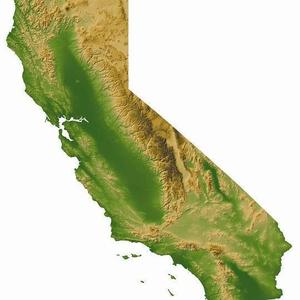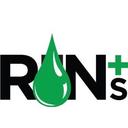Scientists say California can get tougher on clean fuels

March 21, 2018
BY The Union of Concerned Scientists
California can reduce carbon emissions by more than 70 million metric tons by 2030, akin to taking 15 million gasoline-powered cars off the road in one year, by adopting a higher target for its Low Carbon Fuel Standard, according to “California's Clean Fuel Future: Assessing Achievable Fuel Carbon Intensity Reductions Through 2030,” an analysis released today by the U.K.-based research firm Cerulogy.
The standard, adopted in 2009 by the California Air Resources Board, requires petroleum refineries and fuel importers to reduce the carbon intensity of the fuels they sell in California. Carbon intensity is a measure of the global warming emissions per unit of fuel over the fuel’s life cycle. The LCFS currently requires a gradual reduction in carbon intensity of 10 percent by 2020 relative to 2010. Refineries and fuel importers can reduce carbon intensity by either selling fuels that have lower carbon intensity or by purchasing credits generated by sellers of lower-carbon fuels, like electricity, renewable natural gas, ethanol, biodiesel or renewable diesel.
Since it was adopted, the LCFS has reduced carbon pollution emissions in California by more than 30 million metric tons, equivalent to removing 6.4 million gasoline-powered cars from the state’s roads in one year. And because the LCFS also reduces toxic air pollution emitted by cars, this program minimizes health impacts in communities that live near freeways.
Advertisement
The study found that California could feasibly increase its LCFS carbon intensity reduction target in 2030 to well over 20 percent—and perhaps as much as 26 percent—and spur more rapid deployment of clean fuels.
The findings are timely as the California Air Resources Board will consider amendments to the LCFS next month, including extending the program from 2020 to 2030 and increasing the target above 10 percent. California Air Resources Board staff have currently proposed a 20 percent 2030 target.
The LCFS is popular among supporters of clean transportation policies because it has spurred the building of clean fuel infrastructure, increased investments in low carbon fuel production and provided rebates for electric cars and transit buses alike. The LCFS has also been a boon to the California economy; since 2011 the program has helped drive more than $1.6 billion in investment in California’s clean fuel economy.
Advertisement
“California needs to reduce overall emissions to avoid the worst impacts of climate change,” said Jeremy Martin, author of the 2016 report “Fueling a Clean Transportation Future” and senior scientist at the Union of Concerned Scientists. “A stronger LCFS will accelerate the deployment of clean fuels, and this study shows that, despite oil industry claims to the contrary, tougher standards are feasible. The LCFS is an effective program at a critical juncture. We must extend the program and raise the targets high enough to realize the full opportunity for air quality, economic and climate benefits from a cleaner state fuel supply.”
“With a strong track record of success, the Low Carbon Fuel Standard has reduced the carbon footprint of California’s transportation sector while driving innovation and fostering economic opportunities throughout the state,” said Andy Wunder, manager of California policy and partnerships at Ceres. “Ambitious 2030 targets will help ensure California meets its greenhouse gas reduction goals and remains a world leader in low carbon fuel development and deployment.”
“CARB should do everything in its power to reduce carbon pollution and make sure Californians can breathe clean air," said NextGen California Transportation Policy Manager Colin Murphy. “The LCFS has been a tremendously successful policy, bringing innovative clean transportation fuels into the market, reducing carbon pollution by millions of tons and helping clean up the air in our state. Now, CARB can go further on clean fuels and raise the LCFS targets to reduce pollution from existing cars while supporting the deployment of zero-emission transportation across the state.”
The analysis was commissioned by Ceres, NextGen America, and the Union of Concerned Scientists. The research was conducted by Chris Malins, who has a doctorate in applied mathematics from the University of Sheffield, was formerly Fuels Program lead at the International Council on Clean Transportation, and is an independent global expert on transportation, energy and clean fuels policy.
Related Stories
The U.S. EPA on March 24 asked the U.S. District Court for the District of Columbia to dismiss a lawsuit filed by biofuel groups last year regarding the agency’s failure to meet the statutory deadline to promulgate 2026 RFS RVOs.
The USDA on March 25 announced it will release previously obligated funding under the Rural Energy for America Program To receive the funds, applicants will be required to remove “harmful DEIA and “far-left climate features” from project proposals.
2025 International Biomass Conference & Expo concludes as largest event in a decade and unparalleled industry insights
The 2025 International Biomass Conference & Expo, held March 18-20 in Atlanta Georgia, featured of insightful discussions, cutting-edge technology showcases, and unparalleled networking opportunities.
Nearly 1.52 billion RINs were generated under the RFS in February, down more than 25% when compared to the 2.04 billion that were generated during the same month of last year, according to data released by the U.S. EPA on March 20.
The U.S. EPA on March 20 published updated SRE data showing that four new SRE petitions have been filed under the RFS in the past month. According to the agency, 156 SRE petitions are currently pending.
Upcoming Events










